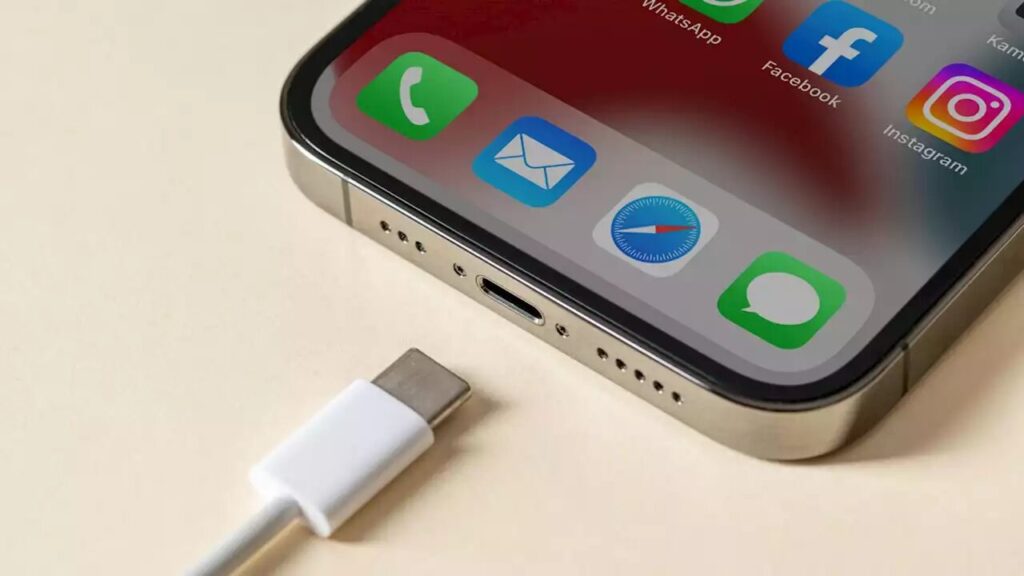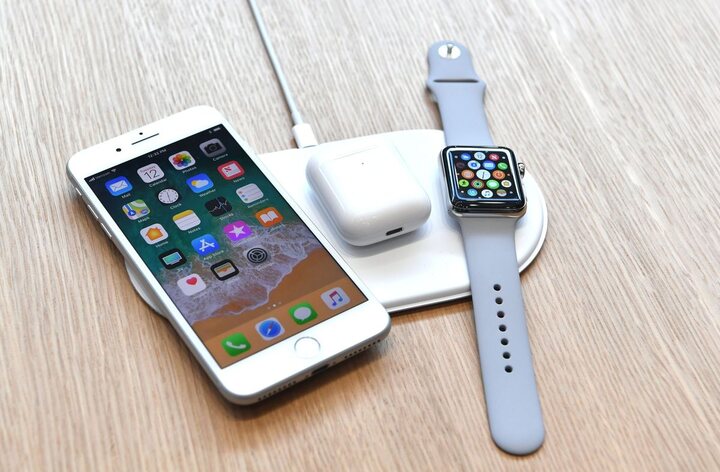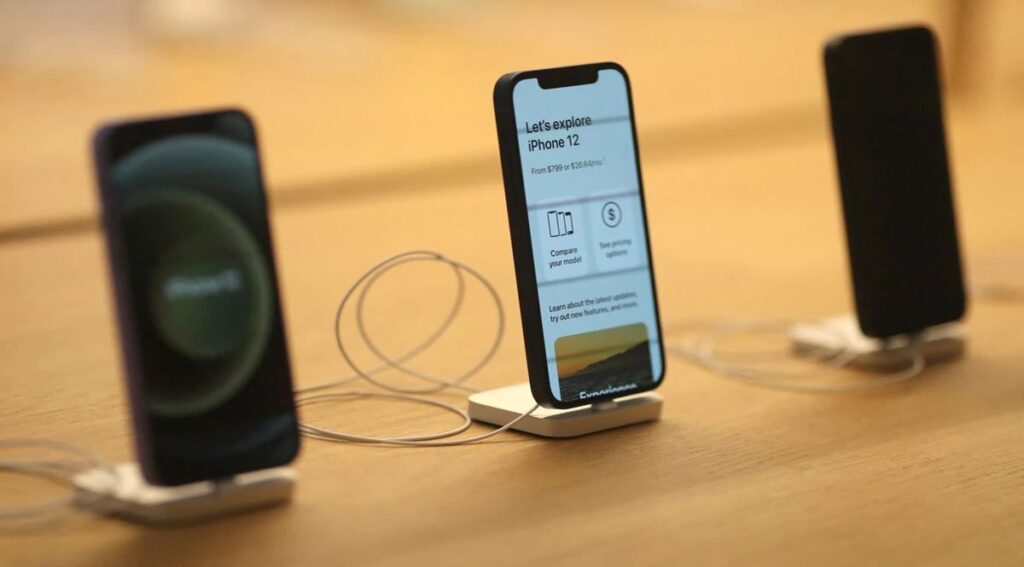USB-C
Apple now has a deadline for switching the iPhone over to USB-C
The European Union has set a December 27, 2024 deadline for device makers to shift to USB-C for data and charging ports, which implies Apple will be required to give up the iPhone Lightning connector before then.
Whilst European Union had already reached a decision, the date is a recent development. It implies that the 2024 iPhone 16 will indeed be able to operate without USB-C, but the 2025 iPhone 17 will be required to have it.

There is a possibility that Apple will make the iPhone 17 completely portless, relying on Wi-Fi for data transmission and wireless charging to charge the battery. Wireless charging devices are excluded from the European Union’s new regulations.
We’ve already heard rumours that Apple is considering switching the iPhone 15 or at least the Pro models to USB-C for its port. However, we’ve heard the same rumour about so many consecutive iPhones at this point.
Read More: Apple to Start Encrypting iCloud Backups
The EU’s deadline for laptop manufacturers has been extended till April 2026. To improve compatibility, hardware manufacturers will have to ensure that the exact charging speed is present regardless of the charger used.
Of course, this only appears to apply to the EU, but it’s not good enough to justify it for companies like Apple to produce one version of its products with USB-C and another without. The only question right now is how long the users have to wait for a USB-C iPhone.
The iPhone’s adoption of USB-C has been a hard journey. It’s something we’ve been asking since the release of the iPhone 12 in 2020, and rumours regarding Apple trying to make the switch on its flagship handsets have been circulating for nearly as long.
Apple is well-versed in the technology since it is already used in MacBook ports and iPad devices. Even the entry-level iPad switched to USB-C previously this year, leaving only iPhones to use the Lightning standard.
It makes good sense for Apple to switch since there isn’t much reason to remain with its proprietary standard at this point. Apple executives have publicly stated that they will have to abide by whatever directive the European Union imposes.
We’d be fascinated if Apple waits till the iPhone 17 to bring USB-C, but the iPhone 15 could be too soon. This is all speculative, but possibly the iPhone 16 which is expected in September 2024, will be the first to include USB-C.

I am a student pursuing my bachelor’s in information technology. I have a interest in writing so, I am working a freelance content writer because I enjoy writing. I also write poetries. I believe in the quote by anne frank “paper has more patience than person
Apple iPhone 15 Series To Have USB-C Charging Port
Apple has confirmed that the USB-C charging port will be used in place of the conventional Lightning port on the next iPhone 15 series when it launches.

Apple’s iPhone 15 lineup suggests that it is prepared for the significant shift to type C. On September 6, 2022, Apple unveiled its latest lineup of iPhone 14, but speculations about the upcoming series have already begun. According to the latest reports, Apple will finally transition to Type C charging ports with the new iPhone 15 series.
With its upcoming iPhone 15 lineup in Europe, Apple is most likely to substitute a type C charging port for its lighting port, which has been in use for over ten years now. Recently, a regulation was established in the European Union requiring all smartphone manufacturers to switch to USB Type C ports by the year 2024.
Apple is now the only significant brand in the smartphone industry that does not adhere to this USB standard.
Apple’s Joswiak revealed at a WSJ tech event that Apple will have to embrace the USB-C connection for its upcoming iPhones. The confirmation follows the EU’s decision in favor of a universal charging connector for all devices.
Reports suggest that the iPhone 15 lineup from Apple will feature four new models with two distinct processors to distinguish between entry-level and premium models. All four models will come with USB-C charging port.
According to speculations, the iPhone 15 Pro models could have enhanced 8GB RAM. The upgraded RAM is added to complement Apple’s new processor. A periscope lens is anticipated for the new iPhone 15 Pro Max.
Although Apple is developing its own 5G modem, the new iPhone 15 range won’t use it yet. This may be used for later models that debut in 2024. The iPhone 15 series will continue with the use of the existing Qualcomm modem.
It is also speculated that the 6.1-inch basic iPhone model is expected to be discontinued when the iPhone 15 series debuts in 2023. A rumor from Gizmochina claims that Apple would probably release an ‘Ultra’ iPhone model boasting a few distinctive features in 2023.
Many people voiced their displeasure with the new iPhone 15 Ultra model on Twitter in response to the rumor. According to LeaksApplePro, the upcoming iPhone 15 Ultra, would have a premium titanium body.
Before the announcement of the iPhone 14 series, it was speculated that hat the Pro versions in this line-up would also have titanium bodies, however, this did not materialize. Titanium-built phones are incredibly rare and will contribute to the product’s improved appearance.
According to a report, Apple has been continually assessing the popularity of the iPhone 14 Plus. Some iPhone manufacturing partners have been asked by the company to stop producing the iPhone 14 Plus right away.
Apple has also contacted two component suppliers to reduce manufacturing by up to 90%. The iPhone 14 Plus is reportedly not as well-liked by users as Apple had anticipated.
The popularity of the iPhone 14 has reportedly decreased. Apple appears to be concentrating on bringing a variety of modifications to the new iPhone 15 series right now.
Along the lines of the EU, India is also considering imposing a rule that would require tech firms to have a common standard charger, including USB-C, by 2024.

I am a law graduate from NLU Lucknow. I have a flair for creative writing and hence in my free time work as a freelance content writer.
EU warns Apple to Switch iPhone to USB-C
Recently the European Parliament passed a resolution mandating the use of USB-C as a common charging port by 2024. All smartphones, cameras, and tablets sold in the European Union must include a USB-C charging port end of 2024. The new rules will also be applicable to laptops starting 2026, providing manufacturers more time to adapt.

The new rule is a component of a larger EU initiative to minimise e-waste and give consumers more ability to make environmentally friendly decisions.
The new regulations will allow consumers to use a common charger for a wide variety of medium and small portable electronic gadgets, eliminating the need for a different charger each time they buy a new device. The new directive was supported by 602 members of the European Parliament.
The USB-C ports used by Android-based gadgets are soon to become the norm across the 27-nation bloc Apple continues to offer its exclusive Lightning connector on the iPhones, AirPods, as well as other devices. As a result of the new regulation Apple will have to migrate to USB-C charging point by the end of 2024.
The reform, the first of its sort anywhere in the world, was voted by a resounding margin in the European Parliament on Tuesday. The move may boost the EU’s position as a leader in setting international standards for telecommunications. This “common port” restriction will affect Apple specifically because a significant chunk of Apple’s devices utilize the Lightning connector instead of USB-C.
MEPs claim that the modification will reduce electronic waste, enhance product sustainability, and enhance the usability of numerous products. .According to Executive Vice President Margrethe Vestager, the move will reduce environmental waste and save customers approximately $247 million a year by eliminating the need to purchase a new charger for each device.
In 2018, the European Commission attempted to find a permanent solution to this issue, however it was not effective in becoming law. Apple said at the time that mandating a standard charging port would hinder innovation and result in electronic waste because customers would be compelled to purchase new cables. Last year, the EU’s continued its efforts, with the European Commission leading the development of a revised version of the directive.
The Internal Market and Consumer Protection Committee backed the guideline in April with a vote of 43 in favour to 2 against. In June, the directive was introduced in the European Parliament. Bloomberg reported in May that Apple is testing upcoming iPhone models that swap out the exclusive Lightning charging port for the more common USB-C connector. USB-C charging ports are already present in the iPad Pro models and Apple laptops.
All new smartphones, tablets, digital cameras, headphones, headsets, portable speakers, handheld game consoles, e-readers, keypads, portable navigation systems, earbuds, and laptops that can be charged via a wired cable and operate with a power delivery of up to 100 Watts must have a USB Type-C port, regardless of the manufacturer.
Users will be able to charge their smartphones at the same pace with any suitable charger since all devices that enable rapid charging will now offer the same charging speed.
The new directive is expected to have the most effect on Apple’s iPhone. Apple has firmly remained with Lightning Connector it first debuted with the iPhone 5 back in 2012. The majority of the smartphone market has progressively focused on USB-C as a singular, standardised wired charging interface. Legislation from the EU may finally compel Apple change its charging port.

I am a law graduate from NLU Lucknow. I have a flair for creative writing and hence in my free time work as a freelance content writer.

